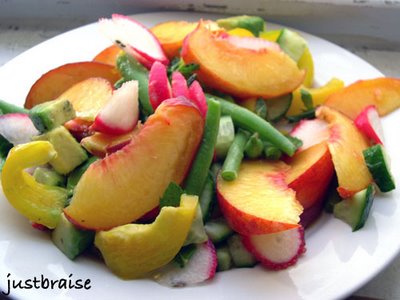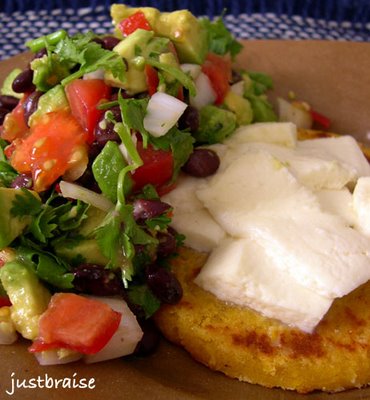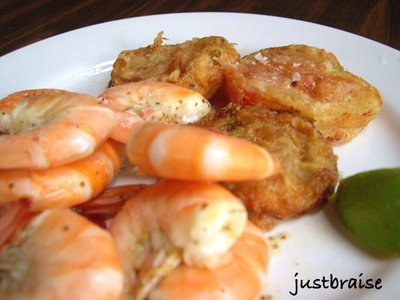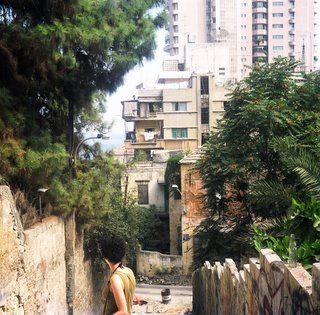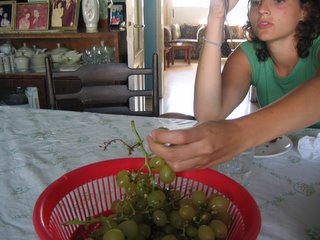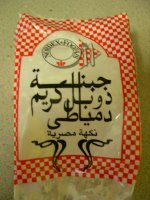City to Agro Side Track

I promise I have food to discuss, but I give a quick and dirty roundup of a recent exciting first for me. While it has to do with food, it falters the line of my normal musings, though it does explain some of my latest absences.
D and I took a quick late summer journey to the city of my birth (Chicago) as well as a border crossing to his grandmother’s home for a State Fair. While D has joined me in Chicago in the past, he has never been witness to the golden summer that makes Chicago the pride of many (myself included). I would say, you never experience this city until you have walked its’ dazzling skyscraper shoreline in the heat of summer.
It was a voyage of firsts: D had his first deep dish pizza as well as his first taste of a true Chicago-style all-beef Vienna hot dog. The winner? It must be the hot dog because one week later D complained about being hungry after work: “if I was in Chicago I could just grab a hot dog anywhere.”
“But you’re in New York, there are hot dog vendors on every corner?!”
“It’s not Vienna-- It’s not as good.”
True enough. Those all-beef dogs in natural casings, 2 pickles, neon relish and a large fresh slice of tomato make my mouth water any day (and I'm usually not a hot dog fan). We would leave Chicago for Indiana and the State Fair-- my turn as newbie.
I love Indiana and spending time with D’s grandmother (and family in general). If it wasn’t for a not-to-be-mentioned altercation with a canoe and some rapids, the time we spend in Indianapolis is always pleasant (play. even the rapids). This time, we would attend the State Fair. My first State Fair ever.
State Fairs are a fabulous event. They bring the community together and (in the Midwest at least) really make one realize the breadth and hold that agriculture still has on this country (which is essentially forgotten if you live in or near a city). My minor “problem” with the State Fair? That the pork food tent is within smelling distance of the swine show barn, the lamb food tent is a sniff away from the lamb show barn, cows near the beef food tent, poultry near the poultry, etc.
Funny that when I started vocalizing my hankering for some bunny on a stick in the poultry and rabbit barn people gave me the evil eye—I could smell bacon frying up while contemplating the birth of 13 piglets! Isn’t that wrong?! No worries, there was plenty of chicken, but no rabbit (or bunny) for sale at the food tent. 
We caught a few shows in the lamb barn. Spoke to the people who told us how judging was done, but couldn’t really explain what was being judged. Watching sheering right before these animals headed off to show was a good time in itself. Many beautiful animals-- and even spoke with a man who raises Shetland Sheep. As we left the distinct smell of lamb kebabs filtered into the arena. 
Next, it was on to the draft horse barn. No worries-- no glue or meat was being grilled up outside this barn (the only one), but there was plenty of overpriced beer.
The above-mentioned poultry and rabbit barn followed. The loudest barn by far, I can see where all the phrases come from: “Hen party,” “louder than a hen house.” I could picture them all plopping their eggs away, knitting little bonnets and gaggling on about what Suzy over in pen A did— can you believe?! But really, it’s amazing to see the variety of chickens. Some of them are truly spectacular. Once I get enough land, neighbors be warned, I’m getting a hen house for fresh eggs! And did you know, hens with red earlobes produce brown eggs and hens with white earlobes produce white eggs? At least that's what I was told. Interesting if true.
A quick stop (of many) to the diary barn for milkshakes, some real whole milk extra thick chocolate milk, and a few other treats. Then, it was off to the Pioneer Village. Here, I finally met with my corn meal lady (mentioned here). Face to names, we’re b-f-f. I also met with my Sorghum man (been ordering from him too lately)—if anyone would like these numbers, please email me direct and I will provide them to you. Of course, I was soon informed, any trip to Pioneer Village is not complete without yer’ cracklins’ (pictured above).
Wound down to the 4-H agro barn for the results to a few other competitions: best honey, largest gourds and best hay bale. Learned a thing or two about honey, picked some up from the local apiary. Found the largest cheddar cheese construction (2,400 pounds) which made me never want to eat cheddar cheese again (and I love cheese!). We eventually left the State Fair by way of the old time pharmacy. I was pretty much born forty years too late-- or a city girl instead of a farm girl.
Tags: travel, farms, hot dog, Chicago pizza.







